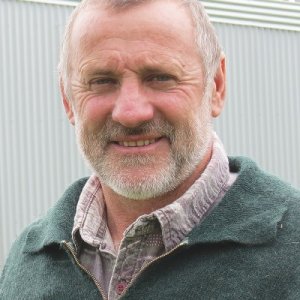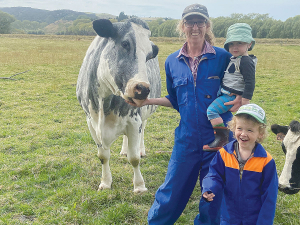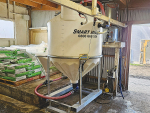Werder was one of many farmers in the tiny settlement of Kakaramea, just north of Patea, who were hit in March by ferocious winds. It was utter devastation: falling trees cut power, damaged fences, blocked races and damaged sheds, houses, schools and halls.
But Werder simply got on with the job and did his best until power was restored and his farm returned to normal. “We lost two hay barns during the storm and they have both been replaced with more suitable sheds, but at a cost. There was insurance but it didn’t cover what we actually rebuilt. It took about four months to get all of those sheds back up because there was a lot of pressure on the builders. The big issue was sheds for the calves and in the end we’ve got better facilities than we had before the storm.”
Werder says the previous sheds were essentially hay barns converted for calving; now they are purpose built. He says while he had insurance it was a nominal amount and did not cover the cost of full replacement. He estimates it cost him about an extra $15,000 but he says the new sheds are stronger and able to withstand strong winds.
The big issue in March was lack of power and the lack of local generators to run milking sheds. Werder had a generator before the storm but has since bought a new one.
“There are probably five or six generators within 2km and all are capable of running milking sheds. We’ve also set them up for water and quite a few farms have got a little generator as well so they can be self-sufficient in water. At the time of the storm water was a big issue. I think we bought two or three tanker loads to get us through tight periods but now we have the facilities and the knowhow to get things running quickly,” he says.
While many dairy farms had fences and races knocked out by falling trees, Werder says he was lucky; this type of damage on his farm was minor compared with others.
But like a lot of farmers in Taranaki, he has a forestry block which was damaged by the high winds. He says some farmers had to mill their damaged forestry plantations and get what they could for their logs – in most cases very little. Some just cleared out the logs and planted again, their retirement plans in tatters. In his case much of the damage was to trees in the middle of his block and only when he logs it in about 10 years will the full extent of the damage be known
Maize crops were also badly damaged in the storm and Werder estimates yields were as low as 12-13 tonnes/ha, which meant the growers would lose money on the crop or at best just cover their costs. While maize yields in the area were low, farmers including Werder used PKE as the supplement of choice to keep going.















